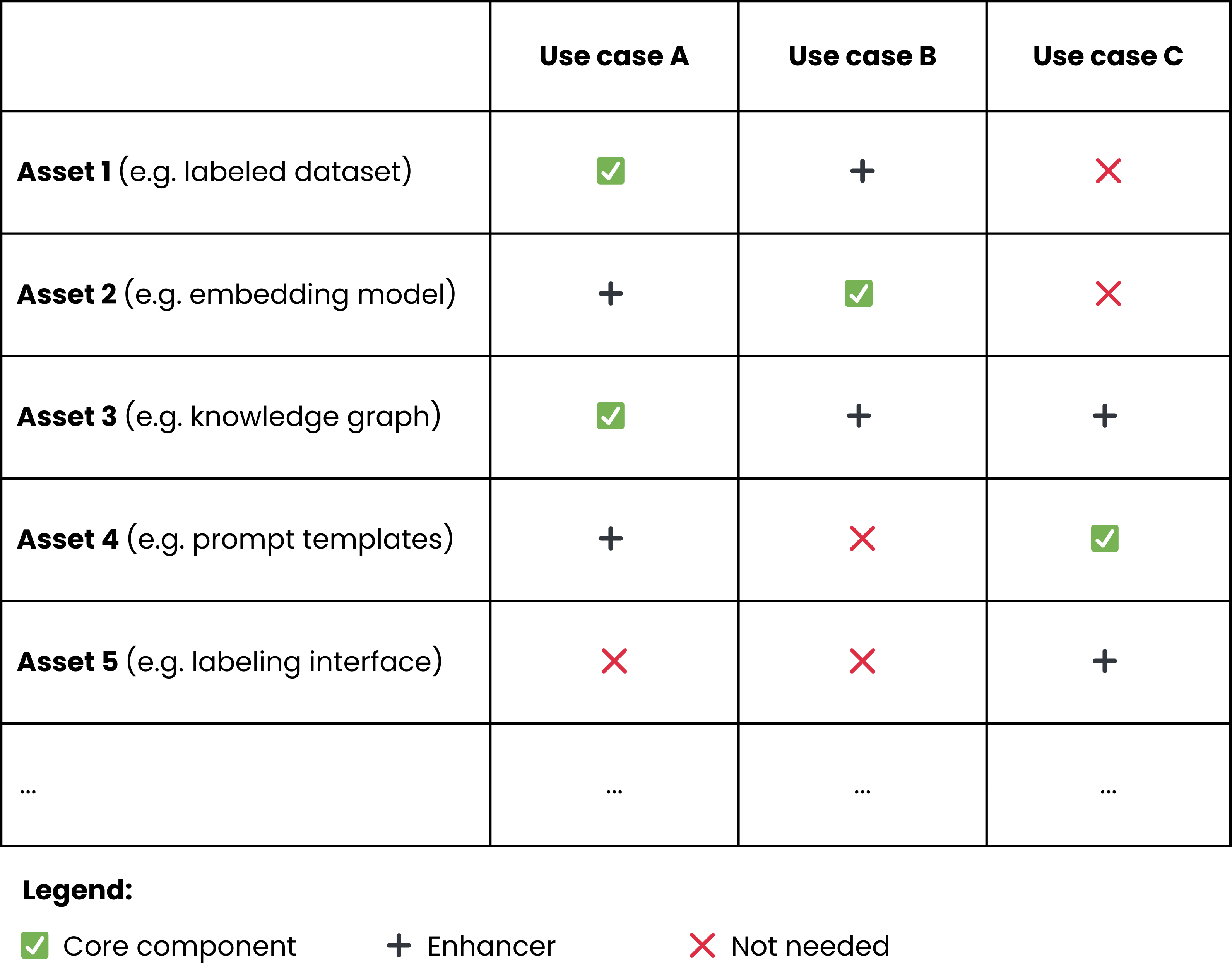AI Spillover Matrix
The AI Spillover Matrix helps teams identify and leverage second-order value from AI investments. When datasets, models, pipelines, or knowledge structures are designed with reuse in mind, they can accelerate future initiatives, reliminate redundancy, and unlock compounding returns across the organization. This model provides a way to think beyond isolated use cases and build foundational, strategic AI assets.

Principles
Not all AI assets are equal — some create spillover value far beyond their original scope
Reusable assets multiply ROI by accelerating future development
Plan for reuse early — don't wait until the first use case is 'done'
Surface and document reusable assets so other teams can find and use them
Balance generality and specificity — reuse should never mean watered-down value
Implementation steps
1Catalog AI assets
Take stock of existing AI assets, such as labeled datasets, models, ontologies, pipelines, infrastructure, and knowledge artifacts.
2Evaluate reuse potential
For each asset, assess how easily it could support new use cases, domains, or products. Consider similarity of task, structure, and data.
3Lower barriers to adoption
Document, modularize, and wrap reusable assets with APIs to make them easy to plug into new workflows.
4Track and promote reuse
Highlight and share examples of successful spillover to encourage reuse culture. Build internal visibility around shared AI assets.
5Design for strategic surface area
When planning new initiatives, consider which assets could have cross-use leverage. Prioritize strategic use cases with clear spillover effects.
Anti-patterns
Asset silos: Teams keeping models or data private without clear interfaces or visibility.
Copy-paste redundancy: Rebuilding the same tools or models in multiple places without coordination.
Overgeneralization: Building generic tools that fail to meet the needs of any one user group.
Neglecting documentation: Creating powerful internal tools that no one else can discover or use effectively.